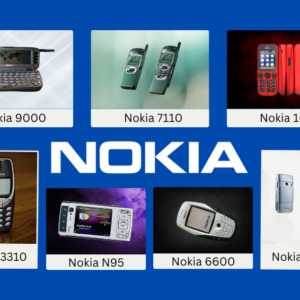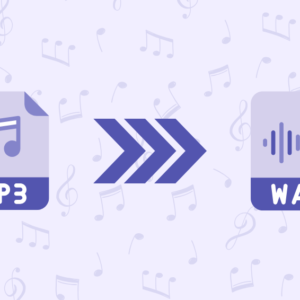In the digital age, data is one of our most valuable assets, whether it’s personal photos, work documents, or critical system files. However, despite our best efforts to protect it, data loss can occur due to various reasons—accidental deletion, hard drive failure, system crashes, malware attacks, or even formatting errors. When this happens, it can feel like all is lost. Thankfully, file recovery software can often help you retrieve lost data, saving you from potential disaster.
For Windows 10 users, having reliable file recovery software is essential. Windows 10, while robust, is not immune to data loss scenarios. Whether you’re a casual user who needs to recover a few lost files or a professional dealing with critical data, the right software can make all the difference. But with so many options available, how do you choose the best one?
Criteria for Selection
When choosing the best file recovery software for Windows 10, several key factors need to be considered. The following criteria were used to evaluate and select the best option:
Ease of Use
- User-Friendly Interface: The software should be easy to navigate, with a clear and intuitive user interface that allows users of all skill levels to recover lost files without needing extensive technical knowledge.
- Guided Recovery Process: Features like step-by-step wizards or recovery guides can greatly enhance the user experience, especially for those who are not tech-savvy.
Effectiveness
- Recovery Success Rate: The software must be capable of effectively recovering a wide range of file types, including documents, photos, videos, and system files, from different scenarios such as accidental deletion, formatting, or system crashes.
- Support for Various File Systems: It should support all major file systems used by Windows 10, including NTFS, FAT32, exFAT, and others.
- Deep Scan Capabilities: Advanced scanning options, such as deep scans, are crucial for locating files that are more challenging to recover, especially from formatted or corrupted drives.
Compatibility with Windows 10
- Seamless Integration: The software must be fully compatible with Windows 10, ensuring it can recover files from the latest versions and updates without compatibility issues.
- Device Compatibility: The ability to recover files from various storage devices (e.g., hard drives, SSDs, USB drives, memory cards) is also important.
Cost
- Free vs. Paid Options: We considered the availability of free versions and the value they provide. While some users may require only basic recovery features, others might need more advanced options available in paid versions.
- Value for Money: For paid software, the price should be justified by the features offered, including the range of recoverable file types, the success rate, and customer support.
Additional Features
- Preview Functionality: The ability to preview files before recovering them can save time and help users select the right files to restore.
- Data Protection Tools: Some software offers additional tools, such as data protection features (e.g., Recovery Vault) that help prevent future data loss by creating backups or protecting files from accidental deletion.
- Speed and Performance: The efficiency of the scanning and recovery process is important, especially for larger drives or complex recovery tasks.
By evaluating software based on these criteria, we ensure that the selected tools not only meet the basic needs of file recovery but also offer added value through additional features, ease of use, and overall effectiveness. Whether you’re looking for a free solution or a premium tool, these criteria help guide you to the best file recovery software for your specific needs on Windows 10.
Top 10 File Recovery Software for Windows PC
Below are listed the best file recovery software options for Windows 10, each tool evaluated based on ease of use, effectiveness, compatibility, cost, and additional features. Whether you’re looking for a free solution or a premium tool with advanced capabilities, there’s something on this list for everyone.
1. Recuva
Recuva, developed by Piriform, is a popular file recovery tool known for its ease of use and effectiveness. It offers a straightforward interface that even beginners can navigate easily.
Key Features:
- Deep scan mode for thorough searches
- Preview files before recovery
- Securely delete files to ensure they cannot be recovered
Pros:
- User-friendly interface
- Free version available
- Effective in recovering a wide range of file types
Cons:
- The free version lacks advanced features
- Limited customer support
Pricing: Recuva is available in a free version, while the Pro version offers additional features like automatic updates and virtual hard drive support.
2. EaseUS Data Recovery Wizard
EaseUS Data Recovery Wizard is a robust tool that supports recovering files from various devices, including hard drives, USB drives, and memory cards. It’s widely regarded for its high recovery success rate.
Key Features:
- Recovers lost, deleted, formatted, and corrupted files
- Supports over 1,000 file types
- Preview feature to verify files before recovery
Pros:
- High success rate for data recovery
- Easy-to-navigate interface
- Recoverable files can be previewed before recovery
Cons:
- The free version limits recovery to 2GB
- The paid version can be expensive
Pricing: The free version allows recovery of up to 2GB of data. Paid versions start at $69.95, offering unlimited data recovery and additional features.
3. Stellar Data Recovery
Stellar Data Recovery is a comprehensive tool that caters to both individual and professional needs. It excels in recovering data from lost partitions and formatted drives.
Key Features:
- Recovers data from lost or deleted partitions
- Supports a wide range of file systems (NTFS, exFAT, FAT, etc.)
- Email recovery for Outlook PST/DBX files
Pros:
- Extensive file type support
- Ability to recover data from encrypted drives
- User-friendly interface
Cons:
- Scanning can be slow for larger drives
- The free version has limited capabilities
Pricing: Stellar offers a free version with a 1GB recovery limit. Paid versions start at $49.99 for the Standard edition, with more advanced options available for higher-tiered plans.
4. Disk Drill
Disk Drill is known for its simple yet powerful features, making it an excellent choice for both novice and advanced users. It also offers data protection features that help prevent future data loss.
Key Features:
- Recovery Vault feature for enhanced data protection
- Recovers lost partitions and supports over 400 file formats
- File preview before recovery
Pros:
- User-friendly interface
- Additional data protection tools
- Supports recovery from a wide range of devices
Cons:
- The free version only allows 500MB of data recovery
- Paid version can be pricey for some users
Pricing: Disk Drill offers a free version with a 500MB data recovery limit. Paid versions start at $89 for a lifetime license.
5. MiniTool Power Data Recovery
MiniTool Power Data Recovery is designed with simplicity in mind, making it an ideal choice for beginners. It effectively recovers files from damaged, formatted, and RAW drives.
Key Features:
- Recovers data from hard drives, SSDs, USB drives, and more
- Simple, user-friendly interface
- Supports a variety of file systems, including NTFS and FAT32
Pros:
- Easy to use, perfect for beginners
- Effective in recovering data from damaged drives
Cons:
- The free version is limited to 1GB of recovery
- Lacks some advanced features found in other tools
Pricing: The free version allows recovery of up to 1GB of data. Paid versions start at $69 for the Personal license.
6. Wise Data Recovery
Wise Data Recovery is a lightweight, fast, and efficient file recovery tool that offers a portable version, allowing you to recover files without installation.
Key Features:
- Fast scan speeds
- Portable version available
- Supports multiple languages
Pros:
- Lightweight and portable
- Quick and efficient file recovery
Cons:
- Limited recovery options for more complex data loss scenarios
- Basic user interface
Pricing: Wise Data Recovery offers both free and paid versions, with the paid version starting at $44.96 per year.
7. R-Studio
R-Studio is a professional-grade data recovery software offering advanced features, making it suitable for experienced users and IT professionals. It excels in network and RAID recovery.
Key Features:
- Advanced RAID reconstruction and recovery
- Network recovery for remote data retrieval
- Supports various file systems, including NTFS, FAT, exFAT, and HFS+
Pros:
- Highly advanced features for professional use
- Effective network recovery capabilities
Cons:
- Steep learning curve for beginners
- Higher price point
Pricing: R-Studio offers a free trial with limited features. Paid versions start at $79.99 for a single user license.
8. PhotoRec
PhotoRec is an open-source file recovery tool that is particularly effective at recovering media files like photos and videos. It’s compatible with multiple platforms, including Windows, macOS, and Linux.
Key Features:
- Recovers over 480 file formats
- Cross-platform support
- Completely free and open-source
Pros:
- Powerful and effective, especially for media files
- Free to use
- Supports a wide range of file formats
Cons:
- Command-line interface may be challenging for some users
- Lacks a graphical user interface (GUI)
Pricing: PhotoRec is completely free, making it an excellent choice for users who are comfortable with command-line tools.
9. Puran File Recovery
Puran File Recovery is a lightweight and straightforward tool that offers effective file recovery for personal use. It supports both deep and quick scan modes, catering to different recovery needs.
Key Features:
- Supports FAT12/16/32 and NTFS file systems
- Deep scan and quick scan options
- Recoverable files are listed with a recovery probability
Pros:
- Free for personal use
- Effective deep scan capabilities
Cons:
- Basic user interface
- Limited advanced features
Pricing: Puran File Recovery is free for personal use, with no paid versions available.
10. Undelete 360
Undelete 360 is a simple file recovery tool that supports a variety of file systems and storage devices. It’s designed for users who need a quick and straightforward recovery solution.
Key Features:
- Supports FAT12/16/32 and NTFS file systems
- Recovers files from hard drives, USB drives, memory cards, etc.
- Includes a file wiping tool to securely delete files
Pros:
- Easy to use
- Fast recovery process
Cons:
- Outdated interface
- Limited recovery features compared to more advanced tools
Pricing: Undelete 360 is available in both free and paid versions. The paid version starts at $29.
Conclusion
When it comes to file recovery software for Windows 10, the best choice depends on your specific needs:
- Best for Beginners: Recuva or MiniTool Power Data Recovery for their simple interfaces and effective recovery capabilities.
- Best for Advanced Users: R-Studio or EaseUS Data Recovery Wizard for their advanced features and high success rates.
- Best Free Option: PhotoRec for its powerful open-source capabilities, especially if you’re comfortable with a command-line interface.
While these tools can help recover lost files, it’s always best to prevent data loss by regularly backing up your files. Remember, no recovery tool guarantees a 100% success rate, so proactive measures like backups are crucial for data security.






